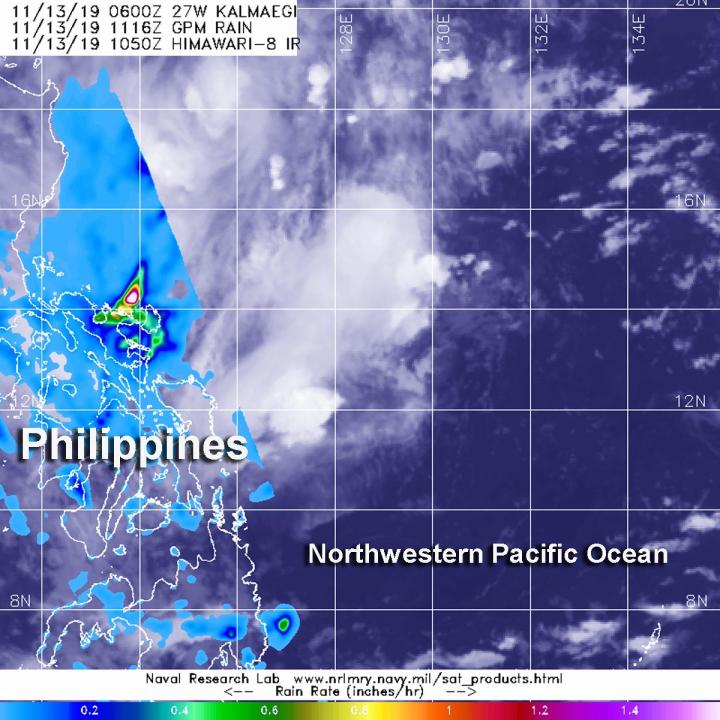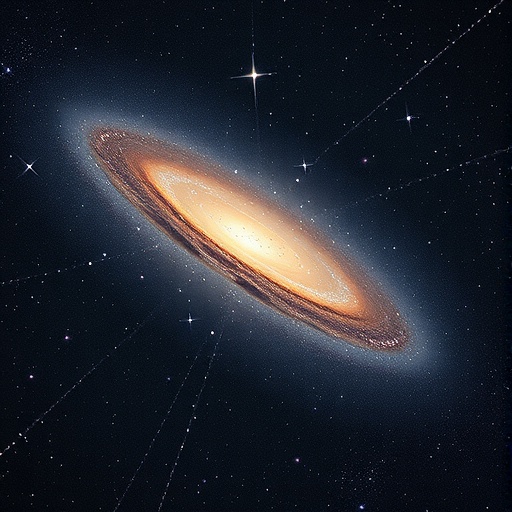
Credit: NASA/JAXA/NRL
Tropical Depression Kalmaegi continues moving west through the Philippine Sea and toward a landfall in the east central Philippines. NASA provided forecasters with an analysis of rainfall rates occurring in the strengthening tropical cyclone.
NASA has the unique capability of peering under the clouds in storms and measuring the rate at which rain is falling. Global Precipitation Measurement mission or GPM passed over Kalmaegi from its orbit in space and measured rainfall rates throughout the storm.
GPM passed over Kalmaegi in the Philippine Sea, Northwestern Pacific Ocean on Nov. 13 at 6:16 a.m. EST (1116 UTC) and found the heaviest rainfall near the eastern coast of the Central Philippines, falling at a rate of over 40 mm (about 1.6 inch) per hour. Forecasters incorporate the rainfall data into their forecasts. Animated enhanced infrared satellite imagery also shows that it is currently a disorganized system with deep and flaring convection pushed westward from the low-level circulation center which is where GPM found the heaviest rainfall.
At 10 a.m. EST (1500 UTC) on Nov. 13, the Joint Typhoon Warning Center or JTWC noted that Kalmaegi was located near latitude 13.5 degrees north and longitude 128.0 degrees east, about 439 nautical miles east of Manila, Philippines. The depression was moving to the west-northwest and had maximum sustained winds 30 knots (34.5 mph/55.5 kph).
Kalmaegi is moving west and is forecast to start weakening within 24 hours. The storm is then forecast to turn to the west-southwest while slowly weakening as it approaches the Gulf of Aden.
###
Typhoons and hurricanes are the most powerful weather event on Earth. NASA’s expertise in space and scientific exploration contributes to essential services provided to the American people by other federal agencies, such as hurricane weather forecasting.
Both the Japan Aerospace Exploration Agency, JAXA and NASA manage GPM.
By Rob Gutro
NASA’s Goddard Space Flight Center
Media Contact
Rob Gutro
[email protected]
Original Source
https:/





